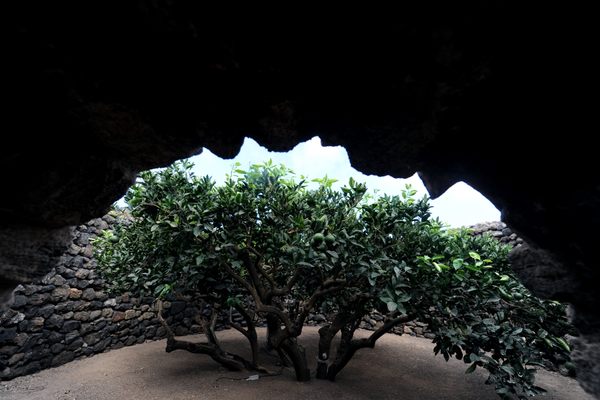Two Centuries-Old Riverfront Gardens in India Return to Full Bloom
A new life for treasures just across the river from the Taj Mahal.

The Taj Mahal is the widely recognized jewel of India. But lost in the glare of its white marble, just across the Yamuna River, are more treasures: two gardens, every bit as stately and significant as those around the tomb of Mumtaz Mahal. As recently as a few years ago, the Mehtab Bagh (“Moonlight Garden”) and the Garden of the Tomb of I’timad-ud-Daulah were under threat from pollution, urban development, and neglect. Over the past four years, the World Monuments Fund (WMF) and the Archaeological Survey of India (ASI) have led the charge in their conservation and restoration. On January 11, people are gathering at the Garden of the Tomb of I’timad-ud-Daulah to celebrate the completed restoration of these 16th- and 17th-century marvels.

These historic gardens, originally built for Agra’s nobility, are two of the city’s few riverfront gardens that survive today. The project of bringing them back to their original glory has involved restoring their original plantings, reactivating their water features, and creating a visitor center. Both sites illustrate the Mughal interest in holding nature and architecture together in conversation. “They represent an important moment in Mughal history and present an important opportunity today to invigorate an asset for the community that can provide a welcoming green space, a tourism destination,” says Lisa Ackerman, Interim CEO of WMF. The Taj Mahal is an architectural icon, but it can’t represent alone a culture that spanned centuries.
The project began in 2014, when the WMF and ASI, with students from Harvard’s Graduate School of Design, began archival research and developed a system to identify and reintroduce the native plant species. According to Ackerman, the gardens now smell distinctly of jasmine. Restored water channels sustain cypress and pomegranate trees, as well as hibiscus and oleander blossoms. The water is also cleaner and fresher than it was a few years ago. “We all know that green spaces are important for people living in the community,” Ackerman says. “These gardens provide environmental and health benefits … they offer the obvious benefit of providing an oasis in the city.”

The project culminated with the completion of the new visitor center at I’timad-ud-Daulah. Ackerman says she’s most looking forward to the lamp-lighting ceremony, an Indian ritual that signifies an auspicious beginning. “There will be that magical moment at which we all look at the site together and realize how beautiful these spaces are today and how much enjoyment can come from visiting them in the years to come.”























Follow us on Twitter to get the latest on the world's hidden wonders.
Like us on Facebook to get the latest on the world's hidden wonders.
Follow us on Twitter Like us on Facebook